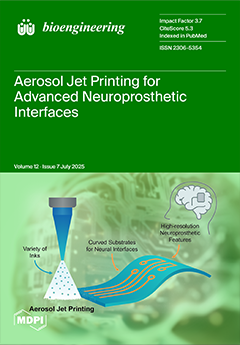Background and Objectives: Three-dimensional (3D) scanning is increasingly utilized in medical practice, from orthotics to surgical planning. However, traditional hand measurement techniques remain inconsistent and prone to human error and are often time-consuming. This research evaluates the practicality of a commercial 3D scanning
[...] Read more.
Background and Objectives: Three-dimensional (3D) scanning is increasingly utilized in medical practice, from orthotics to surgical planning. However, traditional hand measurement techniques remain inconsistent and prone to human error and are often time-consuming. This research evaluates the practicality of a commercial 3D scanning method by comparing the accuracy of scans conducted by two user groups.
Materials and Methods: This study evaluated the following two groups: an experimental group (n = 45) and a control group (n = 42). A total of 261 hand scans were captured using the Structure Sensor Pro 3D scanner for iPad (Structure, Boulder, CO, USA). The scans were then evaluated using Meshmixer software (version 3.5.474), analyzing key parameters, such as surface area, volume, number of vertices, and triangles, etc. Furthermore, a digital literacy test and a user experience survey were conducted to support a more comprehensive evaluation of participant performance within the study.
Results: The experimental group outperformed the control group on all measured parameters, including surface area, volume, vertices, triangle, and gap count, with large effect sizes observed. User experience data revealed that participants in the experimental group rated the 3D scanner significantly higher across all dimensions, particularly in ease of use, excitement, supportiveness, and practicality.
Conclusions: A short 15 min training session can promote scan reliability, demonstrating that even minimal instruction improves users’ proficiency in 3D scanning, fundamental for supporting clinical accuracy in diagnosis, surgical planning, and personalized device manufacturing
Full article






